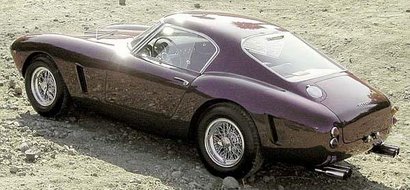The client is new in a sense in that he is new from the point of view of my working on his car, but in fact he was a customer of Evolution Engineering. He purchased several items from us including our exhaust manifold and a pair of the special dampers that I have on my own car.
Since the closure of Evolution, we have remained in contact and finally we got to meet.

The owner had had the engine rebuilt at considerable expense, for example the specially made camshafts which cost him a great deal of money! The firm that rebuilt it appear to have made a good if rather costly job of it.
An interesting item fitted by the company was the programmable ignition, something I have always wanted to have on my car. The blue computer lead socket on the right of the box may been clearly seen in the picture. With this equipment it is possible to set the advance for each 100 rpm step, using a simple Excel spreadsheet. This of course could be done on a rolling road with a laptop. One of the advantages of the system is the ease of installation. There are no external sensors as is the norm with such systems, just a “chopper” in the distributor. The mechanical advance weights and springs are removed and the rotor carrier is locked to the drive shaft. Whilst elaborate sensors etc. are a better route, I believe that this system makes for an excellent compromise and a great improvement over the conventional type of system.

The programmable ignition unit
The owner had recently fitted a replica “works” inlet manifold together with a new pair of Solex ADDHE 45 mm carburettors. These carburettors were considered by many experts to be very good, but sadly Solex introduced them rather late and not so long before the company went bust.
He had had a great deal of trouble with the manifold. He told me first of mis-aligned ports and then of appalling porosity. He had had shown great resourcefulness in solving these problems, which for an item costing about £300 he should not have had to do, in my opinion.
 The 45mm Solexes
The 45mm Solexes
He met me at the station and drove back quite briskly; the car felt as though it had good potential and felt solid. There were however flat spots. Attempting to cure these by increasing the static advance setting resulted in both a much quicker car but appalling pinking. Lacking the information for the ignition there was nothing I could do in this regard, but some time spent on the carburettors produced a most worthwhile improvement. Now, the car started much more readily, but with the overlap of the camshafts and the large carburettors, idling was not as it should be. The problem was that we had no data for the ignition and neither did we have the means to re-program it; it was obvious to me that increased static advance was necessary with a slower increase to follow. There was also a suspicion that at around maximum torque (4500 – 5000) the engine was a little rough suggesting that there was perhaps a little too much there. The only proper answer is a rolling road of course. I believe that the owner will address this giving him the chance to optimise both the carburettor jetting and ignition advance curve.
Now it was my turn to drive the car over some delightful French rural roads. I have mentioned these before – and the lack of traffic makes motoring a pleasure. I found the car powerful and willing to rev easily up to 7000 rpm. However I found the steering to be incredibly nervous. I imagined that the toe was incorrectly set, but back at the workshop I found that the subframe required a considerable amount of tightening up. This had a very satisfactory effect (!) although I still think that the toe requires re-setting. My choice is normally at the minimum specified (1mm out) although I have known racers to set it at parallel which makes for sharper turn-in although at the price of “nervousness”.
After I had left the owner contacted me to say that he was most pleased with the progress whilst of course understanding the constraints under which we had to operate. He added that the car, on the way to Paris pulled 6700 rpm in top gear which with the tyres fitted represents about 116mph, perfectly respectable (in my eyes anyway) although I think that there may well be more to come.
When I have more information I shall provide an update.












3 comments:
Paul,
Any way of checking if this programmable ignition is the type 'AEPL' as featured in Gazoline of some years ago (and originally developed for Alpine A110)? Looks like that anyway. I bought same back then but never mounted it (we discussed this briefly in January).
Reprogramming is a piece of cake if you have the chip-socket and all.
Regards, Thomas
This suggests the A110 was fitted with similarly-spaced (Solex)carbs, as we always thought, Paul ?!
No, these carbs are basically the same as Webers & Dell'Ortos. I have seen a few A110s during my time here and all have "normal" DCOE etc.
Post a Comment